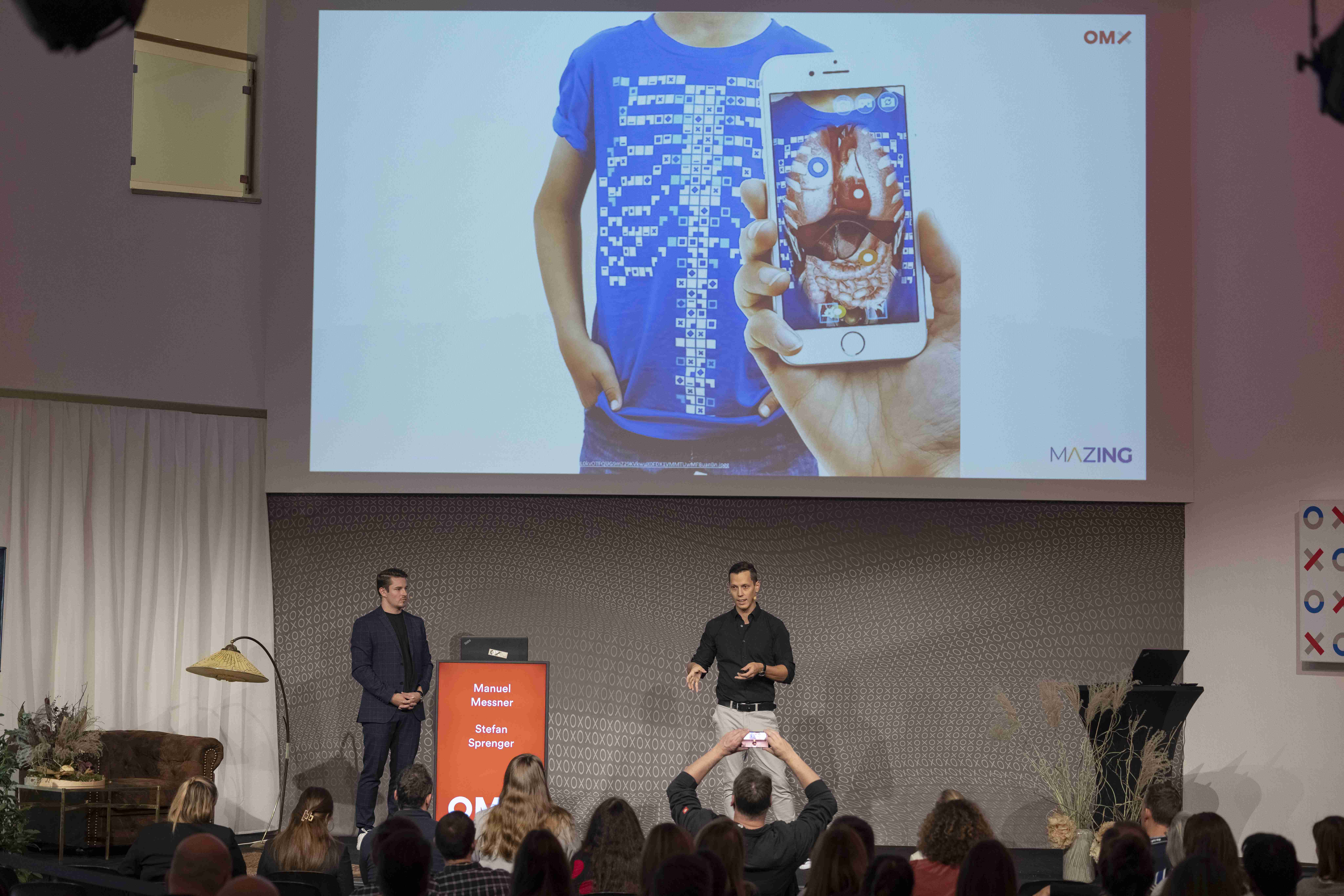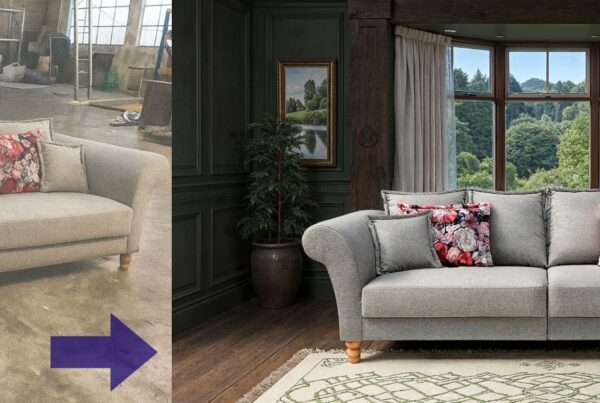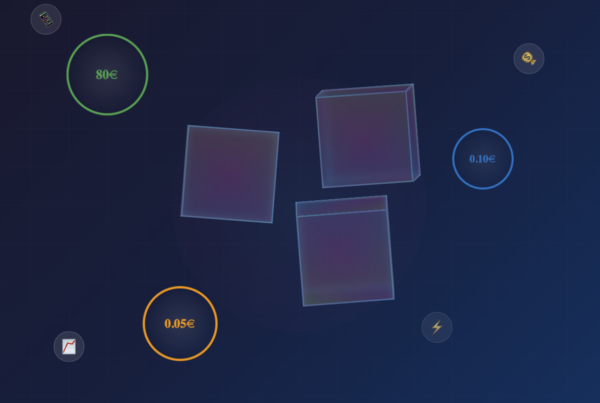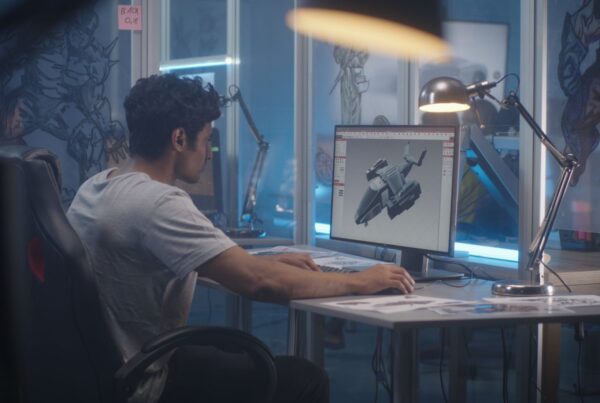OMX is one of the most exciting conferences in online marketing and is known for its selected speakers and valuable networking. Mazing was once again able to give a presentation on AR in marketing at OMX this year. Of course, we also want to make the content available to our readers and customers.
With so many new technical developments, it’s easy to lose track of what’s out there and what’s really useful. One of the most exciting developments that is ideally suited to the field of online marketing is augmented reality (AR). AR can be used to create innovative new campaigns that are a real experience for the user.
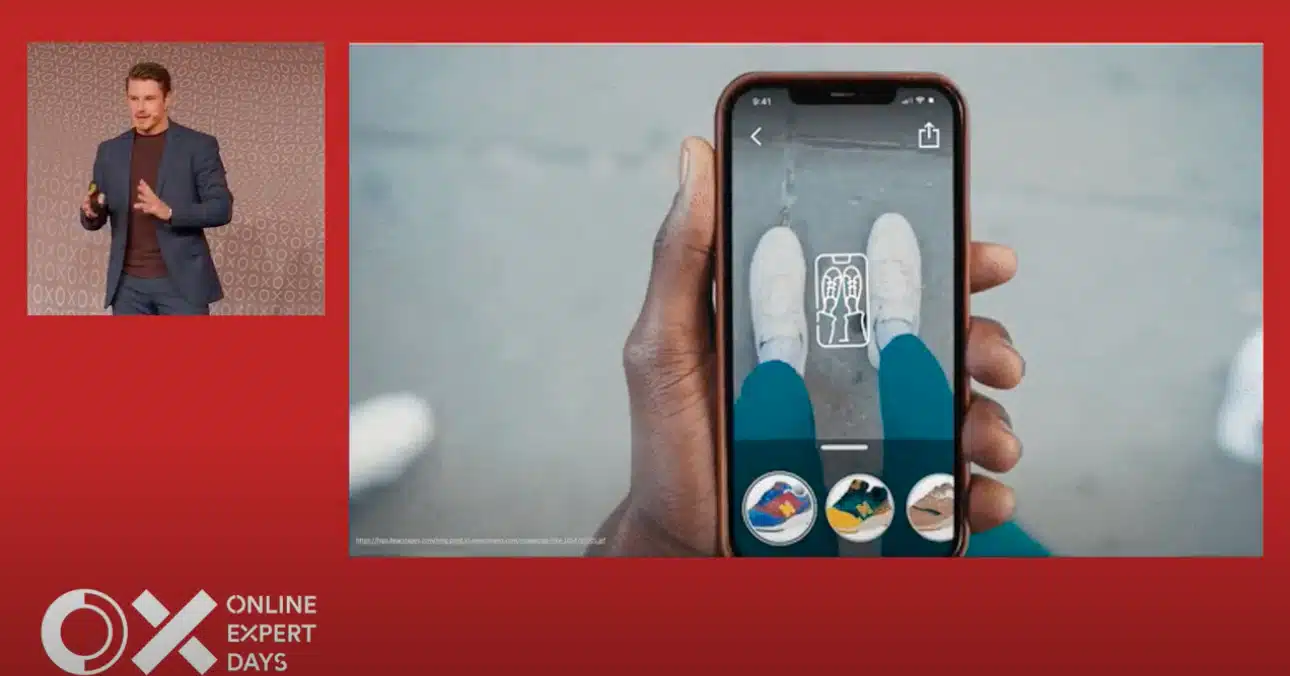
What will be possible with AR in the future?
AR can – and is – used in many different areas. Here are some examples that illustrate the enormous potential.
AR board games:
Tilt Five has developed a new type of board game that uses AR to create a living 3D world from an empty surface. As with a classic board game, however, the players are in the same room, which leads to social interaction. It should also be possible to create your own game worlds. The player himself becomes the content creator.
AR in art and music:
Scanning QR codes to obtain further information about an object is nothing new. However, AR also makes it possible to visualise things that are not possible in reality. You can simply point your mobile phone camera at a picture and shapes and colours become visible that cannot be depicted in real life or background music is played. This can greatly enhance a visit to the museum.
AR in education:
It is already possible to add QR codes or markers to information material or textbooks. When you scan them, for example, videos appear that explain the content. This lends itself very well to the field of anatomy. An entire body can be virtually placed in the room and viewed from all perspectives. The body can be broken down into individual parts, muscles can be shown, movements can be demonstrated, etc. Not only can important information about contemporary history be vividly presented during on-site visits, but dilapidated historical buildings can also be enhanced with AR and thus brought back to life.
Machines:
The shortage of skilled labour means that processes have to be explained more and more simply, even to employees who are not specially trained. AR explains the operation interactively, for example by visually highlighting the button that needs to be pressed directly on the machine. This increases efficiency and reduces susceptibility to errors.
AR in e-commerce:
AR can be used to place furniture in the room, for example. This allows you to assess whether the dimensions and style are right before you buy. But the whole thing goes one step further. This allows entire rooms to be scanned. With AR, your own real furnishings are then hidden and replaced by new, virtual ones.
Who is already using AR in marketing?
The technical possibilities seem endless. But are they already in use? And especially: Is AR in Marketing even useful?
To return to the area of e-commerce: AR technology can recognise body parts, such as feet, and overlap them with virtual products – in this case shoes. Shoes can be tried on virtually before buying. The shoe try-on is becoming increasingly popular and can be used optimally for advertising purposes. Major brands such as New Balance, Asics, Puma and Adidas already have the new feature available. New Balance, for example, confirms that this pays off with an 18% increase in the conversion rate and a 12% reduction in returns. You can find more information here: AR Try-On or here: Try-On for shoes
AR can also be used for packaging to boost the sale of a product. Bombay Gin has developed an innovative label. When this is scanned, videos for mixing the drink appear. Kelloggs has also enhanced packs of its Choco Pops with AR. Not only was the journey from cocoa bean to Choco Pop brought to life, but virtual mini-games for children were also included. The result of all this was a 70% better memory encoding; the visual and interactive experience was thus remembered much better.
A widespread problem of convenient online shopping is that hardly anyone visits real shops any more. So how do you get customers back into the shops? An Under Armour shop in New York has decided to offer its customers an AR shopping experience in the shop. Products from various sports are on display and enhanced with AR. There was a real hype because people filmed themselves in the shop and shared this on social networks. According to a survey, 55% of respondents stated that they believe that AR improves the shopping experience in the real shop.
Burger King had posters from its competitor MC Donalds burnt. Only virtually, of course! Participants in this campaign received a free Whopper in the shop. At KFC, too, you could sometimes exchange virtual chicken wings, which you had to collect in a “chicken wing hunt” through the city, for real chicken wings. The result was a 220% higher return on investment.
The automotive industry has also recognised the benefits of AR. Some functions of the equipment cannot be displayed well with manual operating instructions. Mercedes has introduced AR on some models to explain the functions. This innovation led to a 17% increase in customer satisfaction.
What do I need to be able to use augmented reality in marketing?
It is clear that major brands are already using augmented reality in marketing. But this is also possible for small and medium-sized companies. Of course, it all starts with a good idea. There really are few limits to creativity with AR. A high-quality 3D model is required for the realisation. This can be integrated into an online shop in the final step.
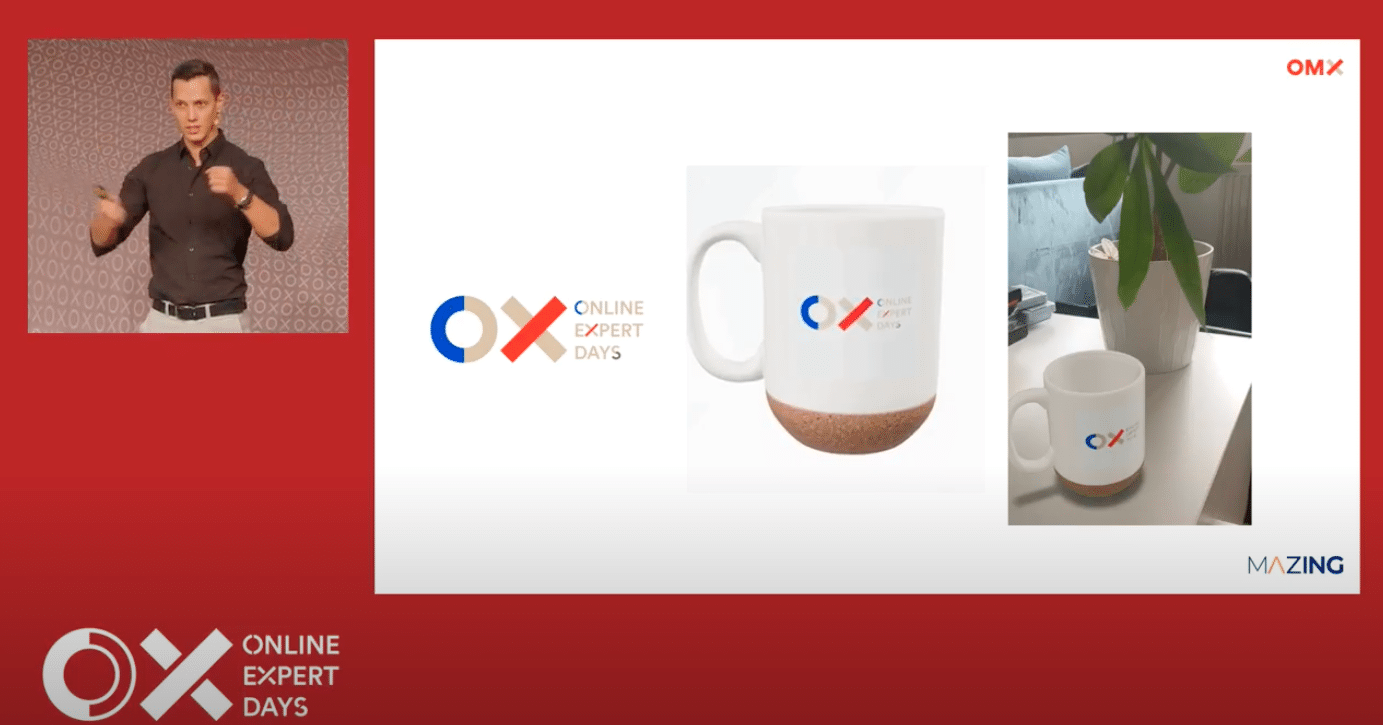
How do I create a 3D model?
3D models can be created in various ways. One possibility is machine learning. Nvidia Nerf has an interesting project here, in which a 3D scene is generated using drone footage. This looks very real, but is associated with great effort and costs.
Another sensational option is to generate images from text input. In Dall-E, for example, keywords can be entered from which new, unique images are then constantly ejected. This is based on data fed into the Internet. DreamFusion from Google can even create entire 3D models. However, this is still quite tedious and takes several hours even with perfect equipment.
Create 3D models with Mazing
Mazing offers a high-quality and affordable solution here. 3D models can be easily created with Mazing. Our 3D specialists create an optimised virtual image of your product at the highest level and only need simple photos as a template – no professional photos are required. Alternatively, CAD models, dimensional sketches or 3D scans can also be used to create the system. Customised models, which can be adapted by the customer with just a few clicks, are also possible. The finished models are perfect for AR in marketing.
How do I integrate a 3D model?
The finished 3D model must now be integrated into an online shop. As this is often quite a complex process, it may be advisable to outsource webshop integration to experts. As we are partners of all common shop platforms, we are happy to take over the webshop integration for you.
We also offer completely new forms of presentation, such as virtual canvases on which photographs and works of art can be placed. The virtual screen and image can then be placed in the room. This turns your own living room into a virtual showroom. If that’s not enough, you can take your products to a whole new level – with NFTs. These can be presented virtually in the room or in the metaverse via AR.
Is this still a dream of the future?
Augmented reality in marketing is here to stay and will be used more and more. The fact that every free space – now also in the digital space – is being misused as advertising space is a terrible idea. It therefore depends on how advertisers use the new technical achievements to exert a positive influence.


